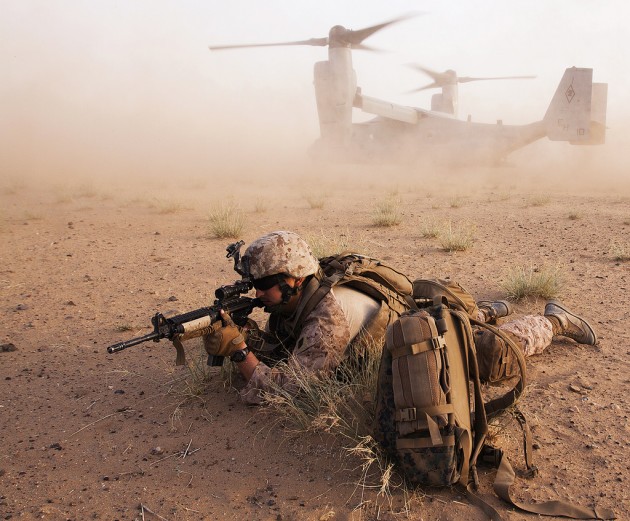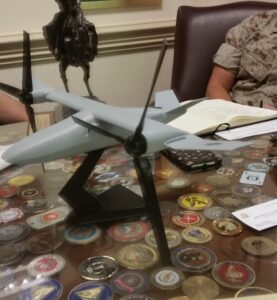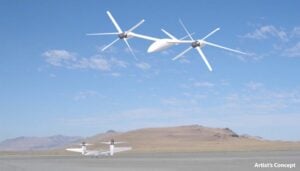New Army jungle wear gives trench foot the boot
By C. Todd LopezMarch 6, 2017
]
WASHINGTON (Army News Service) -- The standard issue combat boot most Soldiers wear today, the one most commonly worn in Iraq and Afghanistan, is great for sandy dunes, hot dry weather, and asphalt. But it's proven not so good in hot and wet environments. So the Army has developed a new jungle boot that some Soldiers will see this year.
In September, Chief of Staff of the Army Gen. Mark A. Milley directed the Army to come up with a plan to outfit two full brigade combat teams in Hawaii, part of the 25th Infantry Division there, with a jungle boot. The Army had already been testing commercial jungle boots at the time -- with mixed results -- but didn't have a specialized jungle boot, so Program Executive Officer Soldier, headquartered at Fort Belvoir, Virginia, had to get a plan together to make it happen.
By October, the Army had made a request to industry to find out what was possible and, by December, contracts were awarded to two boot manufacturers in the United States to build more than 36,700 jungle-ready combat boots, enough to outfit both full IBCTs in Hawaii.
"This is important to the Army and important to Soldiers in a hot, high-humidity, high-moisture area," said Lt. Col. John Bryan, product manager for Soldier Clothing and Individual Equipment with PEO Soldier. "We are responding as quickly as we possibly can with the best available, immediate capability to get it on Soldiers' feet quickly and then refine and improve as we go."
MIXING LEGACY WITH TECH
Right now, the new jungle boot the Army developed will be for Soldiers with the 25th ID in Hawaii -- primarily because there are actually jungles in Hawaii that Soldiers there must contend with. The new boots look remarkably similar to the current boots Soldiers wear. They are the same color, for instance. And the boots, which Bryan said are called the "Army Jungle Combat Boot" or "JCB" for short, sport a variety of features drawn from both the legacy M1966 Vietnam-era jungle boot and modern technology.
The M1966 Jungle Boot, which featured a green cotton fabric upper with a black leather toe that could be polished, had a solid rubber sole that Soldiers reportedly said had no shock-absorbing capability. The new boot uses a similar tread, or "outsole," as the M1966 "Panama style" -- to shed mud and provide great traction, but the added midsole makes it more comfortable and shock absorbing, according to Albert Adams, who works at the Army Natick Soldier Research, Development and Engineering Center.
The outsole of the new boot is connected to the leather upper via "direct attach," Adams said. That's a process where a kind of liquid foam is poured between the rubber outsole and leather boot upper. "[It's] a lot like an injection molding process," he said.
The foam layer between the rubber sole and the upper portion of the boot not only provides greater shock absorbing capability, but it also keeps out microbes in hot, wet environments that in the past have been shown to eat away at the glues that held older boots together. So the new boots won't separate at the soles, he said. "It provides a high level of durability, and it also adds cushioning."
Also part of the new boot is a textile layer that prevents foreign items from puncturing the sole of the boot and hurting a Soldier's foot, Adams said. The M1966 boot accomplished that with a steel plate. The new boot has a ballistic fabric-like layer instead.
Staff Sgt. Joshua Morse, an instructor at the Jungle Operations Training Center in Hawaii, said the puncture resistance is welcome. He said punji sticks, familiar to Vietnam War veterans, are still a problem for Soldiers.
"They use these punji pits for hunting purposes," he said. "In Brunei, you are literally in the middle of nowhere in this jungle, and there are natives that live in that area and still hunt in that area, and it can be an issue." And in mangrove swamps, he said, "you can't see anything. You don't know what's under your feet at all. There are a lot of sharp objects in there as well."
The new JCB also features a heel with a lower height than the M1966 model to prevent snags on things like vines in a jungle environment. That prevents tripping and twisted ankles.
The boot also has additional drainage holes to let water out if it becomes completely soaked, speed laces so that Soldiers can don and doff the boots more quickly, a redesigned upper to make the boots less tight when they are new, an insert that helps improve water drainage, and a lining that provides for better ventilation and faster drying than the old boot.
"You're going to be stepping in mud up to your knees or higher, and going across rivers regularly," Adams said. "So once the boot is soaked, we need it to be able to dry quickly as well."
FEEDBACK FORMED FINAL DESIGN
Morse has already been wearing and evaluating early versions of the JCB, and he thinks the results of the Army's effort to provide him with better footwear are spot on.
"The designs were conjured up in a lab somewhere, and they were brought out here, and the main focus was the field test with us," Morse said. "A lot of us have worn these boots for a year now, different variants of the boots. And all the feedback that we've put into this, and given to the companies, they have come back and given us better products every single time."
Morse said he was initially reluctant to wear the new jungle boots he had been asked to evaluate. On a trip to Brunei, he recalled, he went instead with what he was already familiar with and what he trusted -- a pair of boots he'd worn many times, the kind worn by Soldiers in the deserts of Iraq and Afghanistan.
"I wore a pair of boots I'd had for a couple of years," he said. "I wore them in Brunei and I had trench foot within a week. But then I thought, I have this brand new pair of test boots that they asked me to test; they are not broken in, but I'm going to give them a shot. I put them on. After 46 days soaking wet, nonstop, my feet were never completely dry. But I wore those boots, and I never had a problem again."
The Army didn't design the new JCB in a vacuum. Instead, it worked with Solders like Morse to get the requirements and design just right to meet the needs of Soldiers, said Capt. Daniel Ferenczy, the assistant product manager for Soldier Clothing and Individual Equipment.
"We take what Soldiers want and need, we boil that down to the salient characteristics, hand that over to our science and technology up at Natick; they work with us and industry, the manufacturing base, to come up with this product," Ferenczy said. "This is a huge win, a great win story for the Army because it was such a quick turnaround."
In March, the Army will begin fielding the current iteration of the JCB to Soldiers in the first of two brigade combat teams in Hawaii. During that fielding, the boots will be available in sizes 7 to 12. In June, the Army will begin fielding the JCB to the second BCT, this time with a wider array of sizes available: sizes 3 to 16, in narrow, regular, wide and extra wide. They will also go back and take care of those Soldiers from the initial fielding who didn't get boots due to their size not being available. A third fielding in September will ensure that all Soldiers from the second fielding have boots. Each Soldier will get two pairs of JCBs.
In all, more than 36,700 JCBs will be manufactured for this initial fielding -- which is meant to meet the requirement laid out in September by the Army's chief of staff.
By December, the Army will return to Hawaii to ask Soldiers how those new boots are working out for them.
"Al Adams will lead a small group and go back to 25th ID, to conduct focus groups with the Soldiers who are wearing these boots and get their feedback, good and bad," said Scott A. Fernald, an acquisition technician with PEO Soldier. "From there, the determination will be made, if we had a product we are satisfied with, or if we need to go back and do some tweaking."
AUTHORIZED FOR ALL
Fernald said that sometime between April and June of 2018, a final purchase description for the JCB will be developed based on feedback from Soldiers who wore it. He expects that in fiscal year 2019, an indefinite delivery/indefinite quantity contract will be signed with multiple vendors to produce the final version of the JCB for the Army.
Bryan said the JCB, when it becomes widely available, will be wearable by all Soldiers who want to wear it -- even if they don't work in a jungle.
"From the get-go, we have worked with the G-1 ... to make sure we all understood the Army wear standards for boots," he said. "One of the pieces of feedback we have gotten from Soldiers before they wear them, is they look a lot like our current boots. That's by design. These will be authorized to wear."
While the JCB will be authorized for wear by any Solider, Bryan made it clear that only some Soldiers in some units will have the JCB issued to them. And right now, those decisions have not been made. Soldiers who are not issued the JCB will need to find it and purchase it on their own if they want to wear it.
"We are not directing commercial industry to sell them," Bryan said. "But if they build to the specification we've given them for our contract, they can sell them commercially and Soldiers are authorized to wear them."










